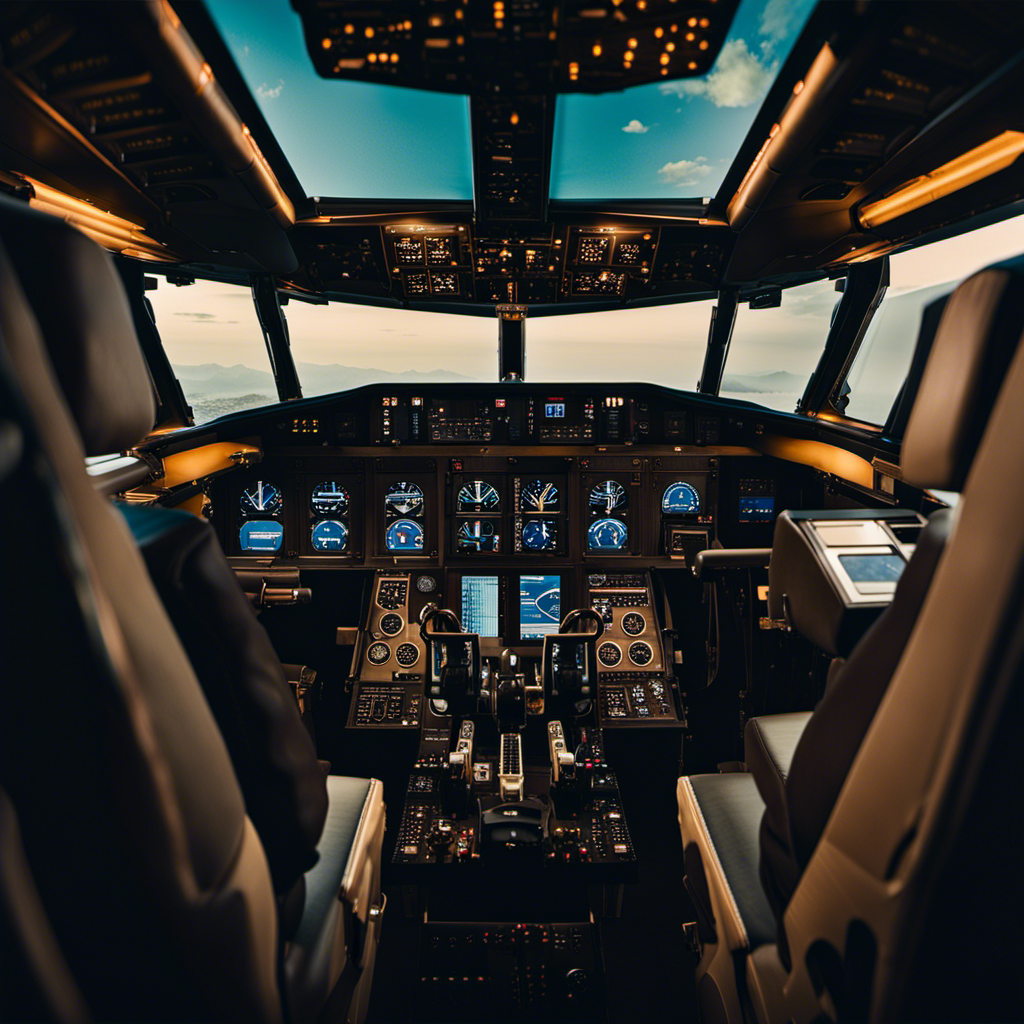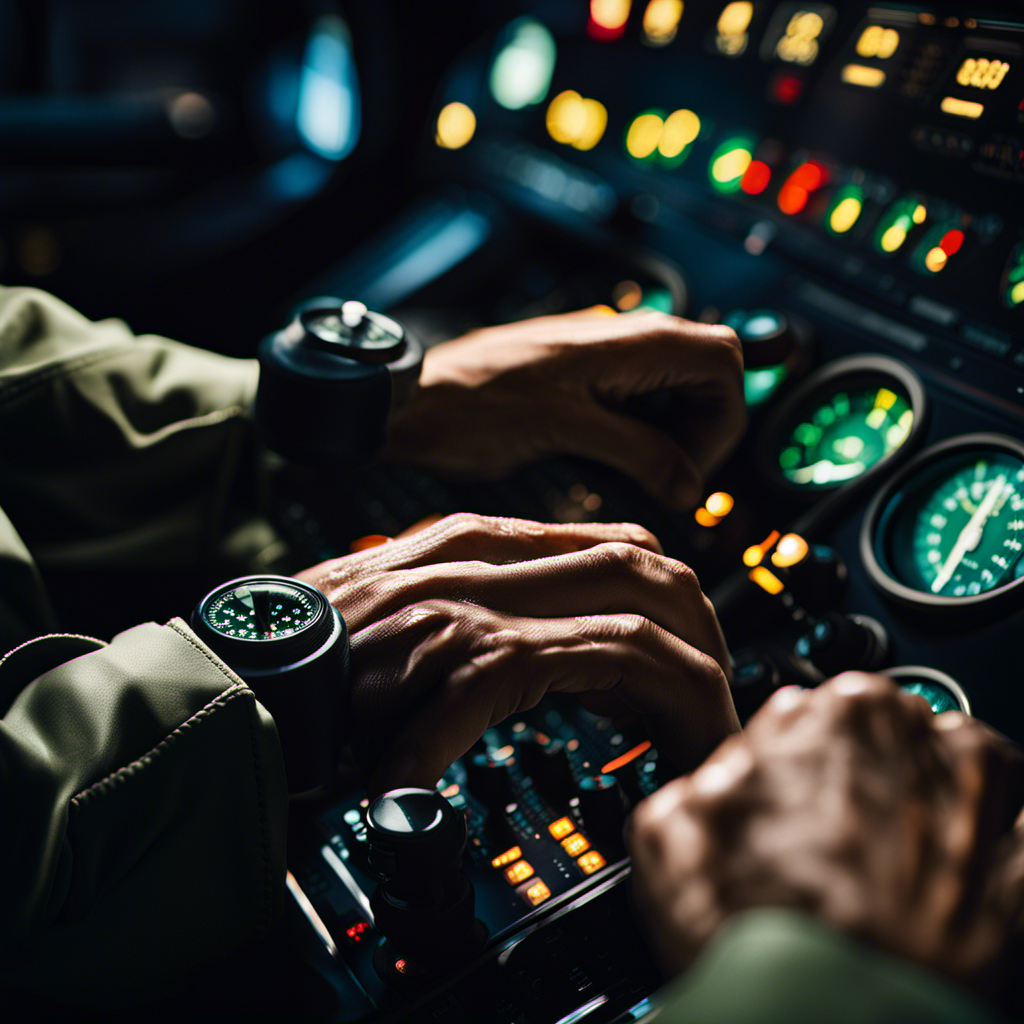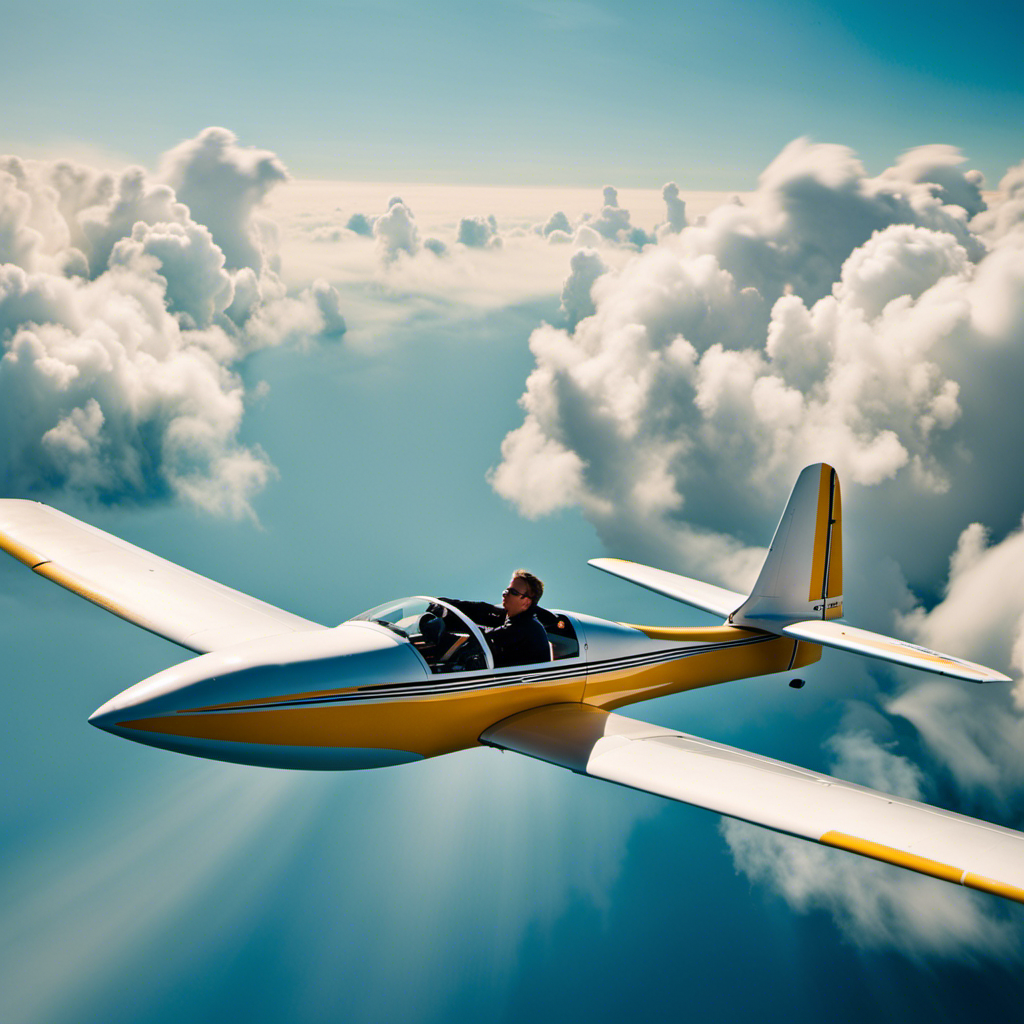As a pilot, I often get asked, “Are pilots locked inside the cockpit?” There is a common misconception that has led to confusion about cockpit security measures. In this article, my goal is to provide you with accurate information and clear up any misunderstandings.
From the purpose of reinforced cockpit doors to the measures taken to ensure passenger safety, I will delve into the protocols, training requirements, and emergency situations that pilots face.
So, let’s dive in and debunk the myths surrounding locked cockpits.
Key Takeaways
- Cockpit access is tightly controlled to prevent unauthorized access.
- Cockpit doors are reinforced and difficult to breach, ensuring cockpit integrity.
- Pilots can leave the cockpit for necessary reasons, but strict protocols and identity verification are in place.
- Clearing up misconceptions about locked cockpits promotes better understanding of security measures.
The Purpose of Reinforced Cockpit Doors
If you’re wondering why pilots get locked in the cockpit, it’s because of the reinforced cockpit doors designed to enhance security. These doors are an essential safety feature that have been implemented in response to the tragic events of 9/11.
The effectiveness of reinforced cockpit doors cannot be overstated. They provide a strong barrier between the cockpit and the cabin, preventing unauthorized access and potential hijacking attempts. By keeping the cockpit locked, pilots are able to focus on flying the aircraft without worrying about potential threats from passengers.
While some may argue that locked cockpit doors can create a sense of isolation for passengers, it is important to prioritize safety over convenience. There are alternative security measures in place, such as flight attendants serving as a secondary barrier, to ensure passenger safety and maintain a secure environment onboard.
Security Measures to Ensure Passenger Safety
Cockpit security measures ensure passenger safety by preventing unauthorized access. As a pilot, I’m extensively trained on these measures to maintain a secure environment inside the cockpit. Here are three key aspects of these security measures that evoke a sense of safety and reassurance:
-
Stringent Passenger Screening: Before boarding the aircraft, all passengers undergo thorough screening to identify potential threats. This includes physical checks, baggage inspections, and advanced scanning technologies. The goal is to ensure that only authorized individuals are allowed on the plane.
-
Reinforced Cockpit Doors: The cockpit door is reinforced and designed to withstand extreme force, making it nearly impossible for unauthorized individuals to gain entry. This provides a physical barrier between the passengers and the flight deck, enhancing overall security.
-
Ongoing Pilot Training: Pilots receive continuous training on cockpit security procedures, including how to handle potential threats and maintain control of the aircraft in emergency situations. This training enables us to respond effectively and ensure the safety of passengers.
With these security measures in place, passengers can have confidence in the safety of their flight.
Now, let’s explore the pilots’ ability to open and exit the cockpit seamlessly, ensuring efficient operations in emergency situations.
Pilots’ Ability to Open and Exit the Cockpit
The ability to easily open and exit the cockpit is crucial for pilots to ensure efficient operations and respond effectively in emergency situations. Pilots are trained on specific cockpit entry procedures and emergency procedures to ensure their ability to access and leave the cockpit quickly and safely. To give you an idea of the importance of this, here’s a table that showcases some common cockpit entry procedures and emergency procedures:
| Cockpit Entry Procedures | Emergency Procedures |
|---|---|
| Use a code or keycard | Decompression |
| Enter a specific code | Engine failure |
| Verify identity | Fire |
These procedures are carefully designed to prioritize the safety of the pilots while also allowing them to perform their duties efficiently. Now, let’s transition to the next section, where we will discuss the communication and collaboration between pilots and cabin crew.
Communication and Collaboration between Pilots and Cabin Crew
Effective communication and collaboration between pilots and cabin crew are essential for ensuring a smooth and safe flight. Crew communication protocols and interpersonal dynamics in the cockpit play a crucial role in maintaining a cohesive and efficient team.
Pilots and cabin crew rely on clear and concise communication to relay important information, such as weather conditions, operational updates, and passenger-related concerns. Crew communication protocols outline the procedures for exchanging information and coordinating tasks during different phases of the flight.
Interpersonal dynamics in the cockpit involve building trust, fostering open communication, and promoting teamwork among the crew members. This strong collaboration allows for effective decision-making and problem-solving, ultimately enhancing the overall flight experience.
In emergency situations and protocols, pilots and cabin crew must follow specific procedures to ensure the safety and well-being of everyone on board, without compromising the continuation of the flight. Transitioning into the subsequent section, emergency situations require swift actions and adherence to established protocols.
Emergency Situations and Protocols
In emergency situations, you must remain calm and follow established protocols to ensure the safety of everyone on board. As pilots, our training extensively covers emergency procedures, equipping us with the knowledge and skills to handle a wide range of critical situations. From engine failures to severe turbulence, we are prepared to swiftly take the necessary actions to protect our passengers and crew. To give you an idea of the comprehensive training we receive, take a look at the table below:
| Emergency Procedure | Pilot Training |
|---|---|
| Engine Failure | Simulated drills, procedures, and checklists |
| Loss of Cabin Pressure | Rapid descent and communication protocols |
| Fire on Board | Firefighting techniques and evacuation procedures |
| Severe Turbulence | Maneuvering techniques for maintaining control |
| Emergency Landings | Preparation for landing on various surfaces |
Knowing these emergency procedures inside out allows us to operate efficiently and effectively during critical moments. It also enables us to coordinate with other crew members, including flight attendants, who play a crucial role in assisting pilots during emergencies.
Role of Flight Attendants in Assisting Pilots
As a passenger, you might not realize the critical role flight attendants play in assisting pilots during emergencies. Not only are they responsible for ensuring the safety and comfort of passengers, but they also act as a crucial link between the cabin and the cockpit.
Flight attendants are trained to handle various emergency situations, including assisting pilots in the event of an incapacitation or a security threat in the cockpit. They are trained to follow specific protocols to maintain cockpit security, such as communicating with the pilots through a secure system and ensuring that unauthorized individuals do not gain access to the cockpit.
Their quick thinking and coordination with the pilots can make a significant difference in managing emergency situations effectively. Understanding the responsibilities and training of flight attendants highlights the importance of their role in ensuring the safety of everyone on board.
This emphasis on safety extends to the rigorous training and certification requirements for pilots, which I will discuss in the next section.
Training and Certification Requirements for Pilots
If you want to become a pilot, it’s important to know the extensive training and certification requirements you’ll need to fulfill. Becoming a pilot requires dedication and commitment to the profession. Here are the key requirements you should be aware of:
-
Training:
-
Obtain a private pilot license (PPL) through a certified flight school.
-
Complete a minimum of 40 hours of flight time, including solo flights and cross-country flights.
-
Certification:
-
Pass the Federal Aviation Administration (FAA) written exam and practical flight test.
-
Obtain a second-class medical certificate, ensuring physical fitness to fly.
Pilot training is a rigorous process that requires both theoretical knowledge and practical skills. The FAA sets strict standards to ensure the safety of passengers and crew. Once you have completed the necessary training and obtained the required certifications, you will be ready to embark on an exciting career as a pilot.
Now, let’s transition to discussing the safety measures implemented to prevent unauthorized access to the cockpit.
Safety Measures to Prevent Unauthorized Access to the Cockpit
As a pilot, one of the most critical aspects of my job is ensuring the safety and security of the aircraft and its passengers. To prevent unauthorized access to the cockpit, stringent safety measures have been put in place.
Cockpit access is tightly controlled, and only authorized personnel are allowed entry. One common safety measure is the use of reinforced cockpit doors that are designed to resist forced entry. These doors are equipped with high-security locks and can only be opened from the inside by the flight crew.
Additionally, pilots are trained on protocols for cockpit access, which include verifying the identity of anyone requesting entry before granting access. These measures are crucial in maintaining the integrity of the cockpit and preventing any potential security threats.
Transitioning into the subsequent section about ‘common myths and misconceptions about locked cockpits,’ it is important to address some misconceptions that exist regarding the effectiveness of these safety measures.
Common Myths and Misconceptions about Locked Cockpits
To clarify some misconceptions, you might be wondering about the effectiveness of safety measures in place to prevent unauthorized access to the cockpit. Let me address some common misconceptions about locked cockpit procedures:
-
‘Pilots can’t leave the cockpit during a flight’: This is false. Pilots are able to leave the cockpit for necessary reasons, such as using the restroom or stretching their legs. However, strict procedures are followed to ensure the cockpit remains secure.
-
‘The cockpit door can be easily breached’: In reality, cockpit doors are reinforced and designed to withstand considerable force. They are equipped with sophisticated locks and access control systems, making it extremely difficult for unauthorized individuals to gain entry.
-
‘The cockpit is always locked during a flight’: While the cockpit is generally locked during flight, there are specific protocols in place to allow authorized personnel, such as flight attendants, to enter if necessary.
-
‘Pilots can override the lock from inside’: This is a misconception. The cockpit door cannot be overridden from the inside, even by the pilots, ensuring the highest level of security.
It is crucial to clear up these misconceptions about cockpit security to promote a better understanding of the measures in place.
The Importance of Clearing up Misinformation about Cockpit Security
Make sure you understand the importance of clearing up misinformation about cockpit security to ensure a better understanding of the measures in place.
There are many misconceptions and myths surrounding the topic of locked cockpits, and it is crucial to debunk them for the sake of accurate information.
One common myth is that pilots are locked in the cockpit, unable to leave even in case of emergencies. This is not true. Pilots have the ability to unlock the cockpit door from the inside, allowing them to exit if necessary.
Another misconception is that passengers cannot enter the cockpit. While it is true that access is restricted, authorized personnel such as flight attendants and air marshals can enter if needed.
Frequently Asked Questions
What are the common myths and misconceptions about locked cockpits?
Common misconceptions about locked cockpits include the belief that pilots are always locked inside. In reality, security measures implemented after 9/11 ensure that the cockpit can be locked from the inside for added safety.
What are the safety measures in place to prevent unauthorized access to the cockpit?
Cockpit access is tightly controlled to ensure pilot safety. Measures include reinforced cockpit doors, access codes, and rigorous screening of personnel. These measures prevent unauthorized access and enhance the security of the cockpit.
How do pilots communicate and collaborate with the cabin crew during a flight?
During in-flight emergencies, pilots and cabin crew collaborate using established cockpit protocols. Communication is crucial to ensure the safety of everyone on board. The cockpit serves as a secure area where vital information is shared and coordinated for effective decision-making.
What are the training and certification requirements for pilots?
Training and certification are essential for pilots. They undergo rigorous training programs, including flight school and simulator sessions, to develop the necessary skills and knowledge. Certification is obtained through exams and flight hour requirements, ensuring pilots meet industry standards.
What is the role of flight attendants in assisting pilots?
Flight attendants play a crucial role in ensuring pilot collaboration and smooth operations. Through extensive flight attendant training, they learn to assist pilots in various tasks, creating a symbiotic relationship that ensures a safe and enjoyable flight experience.
Conclusion
In conclusion, the reinforced cockpit doors serve as a fortress, protecting pilots and passengers from potential threats.
Pilots are not locked in, but rather, they have the ability to open and exit the cockpit when necessary.
Communication and collaboration between pilots and cabin crew are vital for a safe and efficient flight.
Training and certification requirements ensure that pilots are well-equipped to handle emergency situations.
Let us debunk the myths surrounding locked cockpits and prioritize the dissemination of accurate information.
Together, we can ensure the utmost safety and security in the skies.
Orion, better known as “Jetstream,” is the voice that brings the stories of the skies to life. His fascination with aviation began at a young age, sparked by his father’s tales of flying and adventure. Orion’s journey into the world of gliding was serendipitous, and from the moment he took his first glider flight, he knew he had found his calling.










